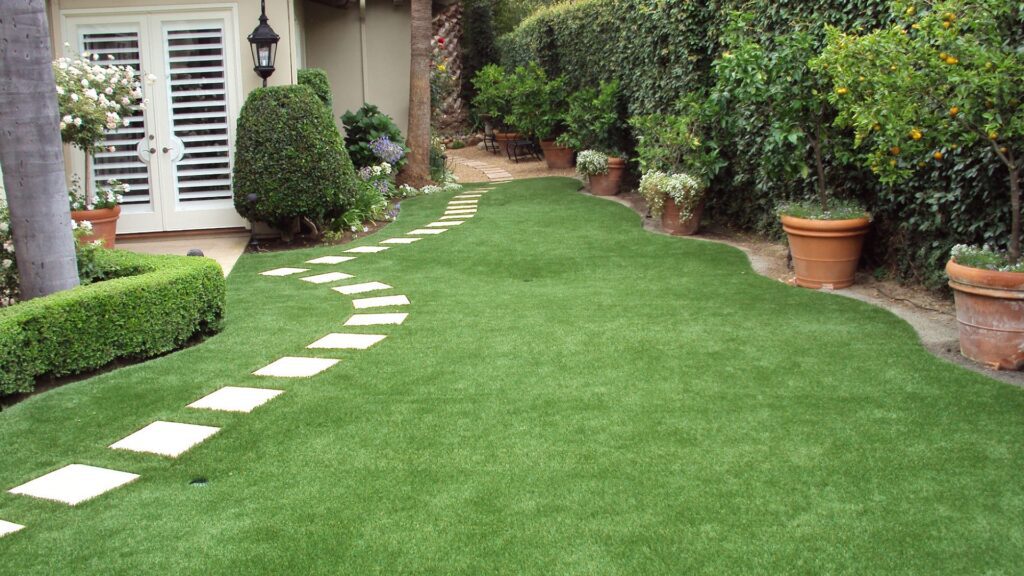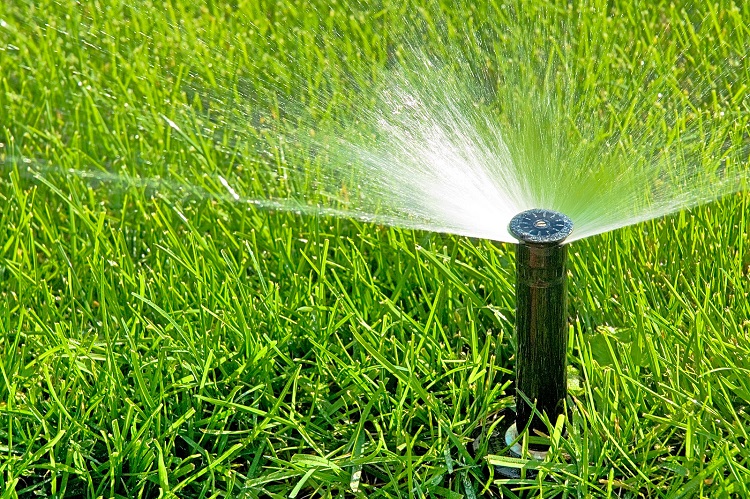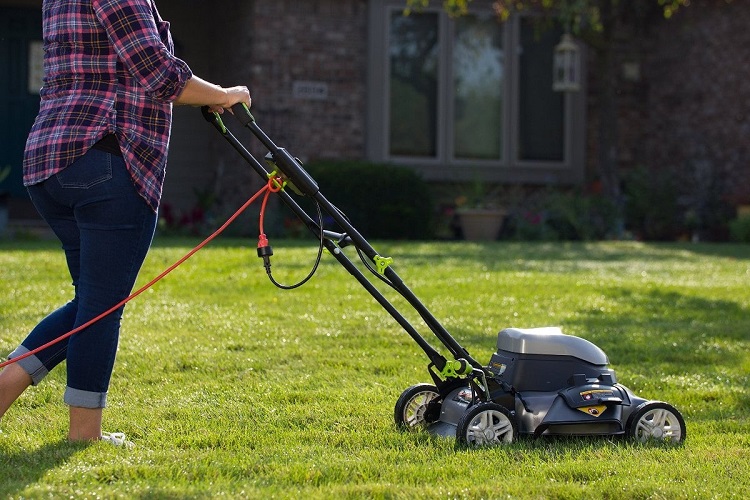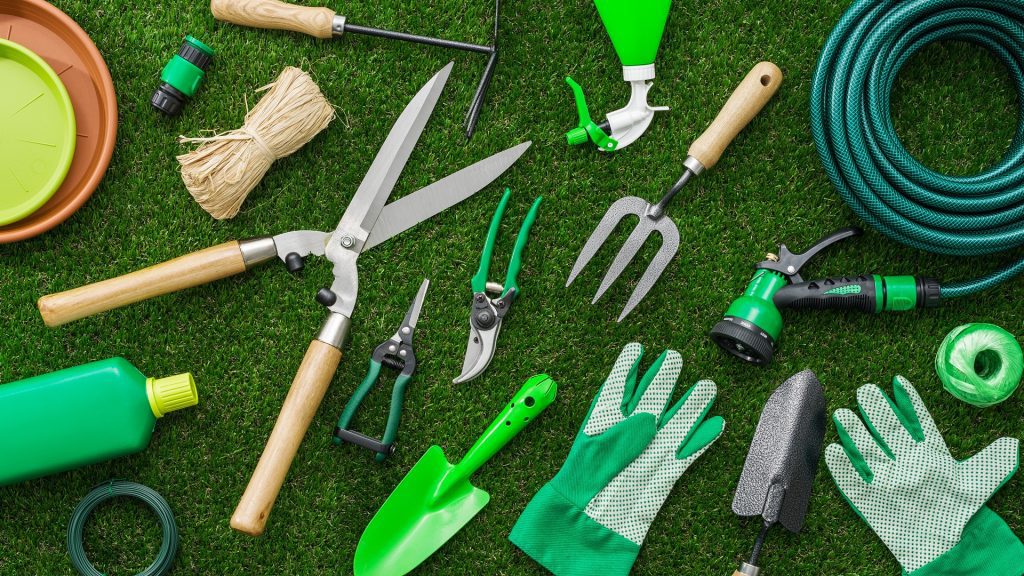
How Much Does a New Lawn Cost – A Beginner’s Budget
There’s nothing like the look of a brand new lawn, but behind the thick and luscious green grass, there’s a lot of hard work and money that goes into it.
If you’re planning on giving your grass a do-over, it’s good to get an idea of the costs upfront before you commit to a long maintenance schedule.
How much does a new lawn cost? The costs of seeding a lawn depend on the seed, with prices ranging between $0.10 to $1.00 per square foot depending on the type of seed you use. In addition to this, you’ll have to pay for soil preparation, fertilization, irrigation, and any tools you plan on using to do the job. Although there’s a lot of effort involved with starting a lawn from scratch, the results will be worth it.
We’ll break down all of the usual new lawn costs as well as what you can expect to spend in the future, so you’re prepared and ready to budget.
How Much Should You Spend on a New Lawn?

Seeding a lawn from scratch is the cheapest way to get the job done, and rough estimates are between $0.10 to $0.20 per square feet of grass you have to cover.
With a premium hydroseed lawn, you can expect to pay between $0.50 and $1.00 per square foot of grass you plan on growing so it’s slightly costlier.
Other options for a new lawn are more expensive again but require less work to lay.
Sod, or grass that has already grown, can be laid over the bare dirt to save you the time of waiting for seeds to grow, and this process costs twice as much as seeds.
Otherwise, artificial turf or fake grass can be laid professionally and at an even higher cost again, but it might not be right for you.
A Breakdown of New Lawn Costs

To get a better idea of the final cost of a new lawn, you’ll need to break down all the supplies and parts of the process. Here are the biggest expenses involved with seeding a new lawn, from start to finish.
Testing the soil – $0.00
When you’re starting from scratch, assessing the soil to see what you’re working with will save you a lot of headaches down the line.
Rather than paying for a soil testing kit, you can dig some dirt up yourself with a hole about 10 inches deep and assess whether the soil is cloddy, granular, or powdery.
Preparing the soil – $50 – $300
Depending on what you’ve found when you assessed the soil, there may be some work to do before you can start seeding.
You might need to add nutrients or other ingredients to make it more viable. Then, you should break up the soil using a tiller, which varies in price from $50 for a hand model to a few hundred dollars for a push behind tiller.
Fertilizing – $50 – $150
A pre-seeding starter fertilizer should be applied to the soil at least a few days before you plan on seeding.
These are slightly more expensive than a standard lawn fertilizer but an essential part of the job. You can expect to pay between $50 and $150 to cover a standard 1,000 square foot area to prepare it for seeding.
Buying seeds – $0.10 – $1.00/square foot
The grass seeds you choose will have a big impact on cost as well, and they can range from around $0.10 per square foot of coverage and up to $1.00 a square foot.
Measure the space you plan on seeding and purchase at least 15% extra seeds as a precaution.
Seeding equipment – $0 – $500
Unless you plan on scattering the seeds by hand, you’ll want some form of seeder to help. These allow you to place the seeds inside and then push or tow them, as they uniformly scatter seeds below.
Basic seeders can cost as little as $50 or the more serious models for towing and larger properties being at a few hundred dollars.
Professionals vs DIY: Which is Best?

Seeding or growing a new lawn takes a lot of work and it might be a job that some homeowners would rather pass onto a professional.
To pay for this service, they’ll need to assess the size of your lawn, the type of seed you want to plant, and what condition the existing lawn is in.
From there, they should be able to give you a quote so you get an idea of what costs to expect.
If you do decide to get help but would rather skip the seed stage, you might decide to have sod laid instead.
This is a grass that’s already grown and is laid down in patches onto the soil, skipping the time spent waiting for the seeds to sprout and mature.
A professional performing this job would charge more than double the cost of seeding, so these costs must be considered.
For most gardeners, the DIY approach will be best, and because it’s not a highly technical job to seed the lawn, it’s easy enough for beginners to do as well.
The hard work comes from the effort involved as it’s not just the seeding but preparing the lawn, fertilizing, watering, and ongoing maintenance that takes a lot of time.
The Cost of Ongoing Maintenance

Once your newly seeded lawn is established, after about eight weeks, there are still some maintenance costs to consider.
When planning a budget for a new lawn, make sure you add these to your total:
Fertilization
A healthy lawn is a fertilizer lawn, and you must commit to applying a healthy dose of nutrients at least three times a year.
There are ways to cut costs here, like using homegrown compost to top-dress, but otherwise, you’ll be spending a few hundred dollars on store-bought fertilizer to get the job done.
Irrigation system
If you take pride in your grass, you’ll want to water it regularly, and once it’s seeded it requires multiple waterings a day.
Although you can do this with a garden hose, installing some sort of irrigation system will make matters easier.
Depending on the features and size of the system, this can cost between $50 to $1,000, and sometimes more, but the convenience factor it brings will make the price worth it.
Lawn maintenance tools
Lawns require a lot of work to stay healthy and in good shape, so you’ll need a number of tools in your arsenal. At the bare minimum, you’ll want a lawnmower and an edge trimmer.
More advanced lawn care tools include lawn sweepers, aerators, dethatchers, power rakes, and more.
Reseeding/overseeding
Even the best-kept lawns need help occasionally and you might need to overseed or reseed your lawn at times.
The cost for reseeding is roughly what you paid to plant the seeds initially, otherwise overseeding is less effort and cheaper if you only have some patchy areas to take care of.
Start Anew With Seeding
A new lawn is an ideal makeover for the outside of your house and a great way to start afresh with your lawn maintenance.
Before jumping into the job, break down the costs and determine a budget so that you’re not left with any surprises.
Related Questions
Gardening can be a satisfying task but it also comes with some costs along the way. To find out more about what gardening equipment you might need and you can expect to pay for it, we’ve answered a few FAQs that will help you out.
How Much Does a Lawn Sweeper Cost?
The price of a lawn sweeper varies depending on the type of sweeper it is and the quality of its build. Tow behind sweepers averages between $300 to $400 for a basic model and manual push sweepers between $100 and $200.
What’s Cheaper Electric or Gas Mower?

The cost of an electric lawn mower is usually cheaper than gas, but it can depend on their engine size and cutting width.
The running costs for an electrical model are usually also cheaper because they don’t require gas or oil to function. However, gas mowers tend to last longer than their electric counterparts.
How Much Does It Cost to Fertilize a Lawn?
The average cost of fertilizing a lawn can vary between $50 to $500, with factors like the type of fertilizer and how much lawn there is to cover being considered.
If you decide to use professional help for fertilization, the costs are even higher, so it’s much cheaper to do the job yourself.
Resources:
